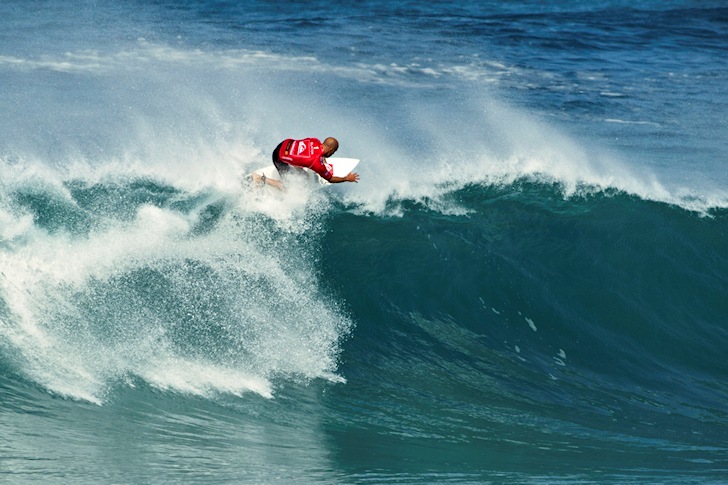There comes a time in every surfer's journey when the initial round of skills-honing has passed, and a plateau is reached.
Your paddling is strong, and you have no problem making the waves you want.
Rides are fun; you know how to get speed, and you can wipe out with the best of them.
It might sound remarkably simple, but often it's the little things that get overlooked in the surfer's arsenal of tricks, and the floater is a prime example.
Until now, you've most likely bailed when the wave ahead of you starts to break.
This is the game-changing trick that instead allows you to "coast" over that breaking section and keep on going.
It's easy, too. Here's how:
Start Small
There's a bit of finesse in this move that takes a little practice, so get used to the sensation by tackling the waves you're most comfortable with first.
Speed, Man, Speed
Do we say it too much? Well, it's true: you need to make sure you're moving as fast as you can.
Momentum is what makes this work.
The lip you're trying to glide over is going to have a different directional energy to the way you're trying to go, and you need the power to get past it.
You know how to pump by now, so get going.
Right Place, Right Time
This works best when you make it to the lip just as it's closing itself over.
Keep your eyes open and try to anticipate where you're going to be.
Think About Your Line
You're aiming for the lip, but you want to slide across it. Think about what kind of line you need to do that.
Angles that are too sharp will kill it. Try to stay nice and fluid.
Crouch on Approach
Center your power by bending your knees a little more and steering with your shoulders.
Make the Swoop Happen
Do it by easing weight onto your back foot once you meet the lip.
Concentrate the arcing motion in your core, and the rest of your body - and the board - will follow.
This gives a surreal feeling of weightless motion - hence the name.
Prepare for the Slow
As soon as you start to feel the drag, check out your options for landing. It'll most likely be back over your shoulder.
If the wave still has some integrity, there'll be a sweet little hollow just below or slightly beyond the edge of the closed-out section that you can zero in on.
Give your board a little turn, your legs a little brace, and get there.
A little bottom turn on arrival, and you should have enough juice to keep going.
Words by Shannon Duvall | Writer


